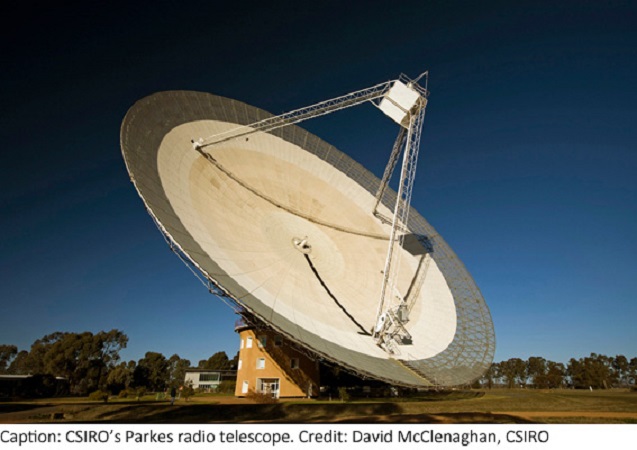Breakthrough Listen, a part of Breakthrough Initiatives, has officially commenced a survey of millions of stars located in the plane of the Milky Way, using the CSIRO Parkes Radio Telescope (“Parkes”) in New South Wales, Australia.
The project, which gathers data from Parkes as well as the Green Bank Telescope in West Virginia, USA, aims to search for extraterrestrial life by surveying 1 million nearby stars, the entire galactic plane, and 100 nearby galaxies, at a wide range of radio and optical bands, in hopes of detecting signals of artificial origin.
The official survey of the galaxy at Parkes began on May 7, after the completion of a sample study that started in 2016. Parkes will cover galactic longitudes between -174 degrees to +60 degrees, and galactic latitudes of 6.5 degrees above and below the plane, at frequences of between 1.23-1.53 GHz. This will amount to a total area 3000 square degrees. Parkes will also aim to survey dwarf galaxies and the Magellanic Clouds.
Unlike the sample study, the current survey will employ a 13-beam receiver at Parkes, in contrast to the single-beam receiver previously used. Additionally, the telescope has been installed with new digital instrumentation, capable of handling 130 gigabits per second, developed by the University of California, Berkeley SETI Research Center (BSRC).
Given Parkes’ new capabilities, Breakthrough Listen has committed the telescope to 1500 hours of observations in 2018, which will generate approximately 100 petabytes of raw data. The data received at Parkes will then be compressed and archived at the Pawsey supercomputing center in Perth, and subsequently searched for signals that have indications of artificial origin.
“With these new capabilities,” said Danny Price, Parkes Project Scientist with the Breakthrough Listen project at UC Berkeley, “we are scanning our galaxy in unprecedented detail. By trawling through these huge datasets for signatures of technological civilizations, we hope to uncover evidence that our planet, among the hundreds of billions in our galaxy, is not the only one where intelligent life has arisen.”




